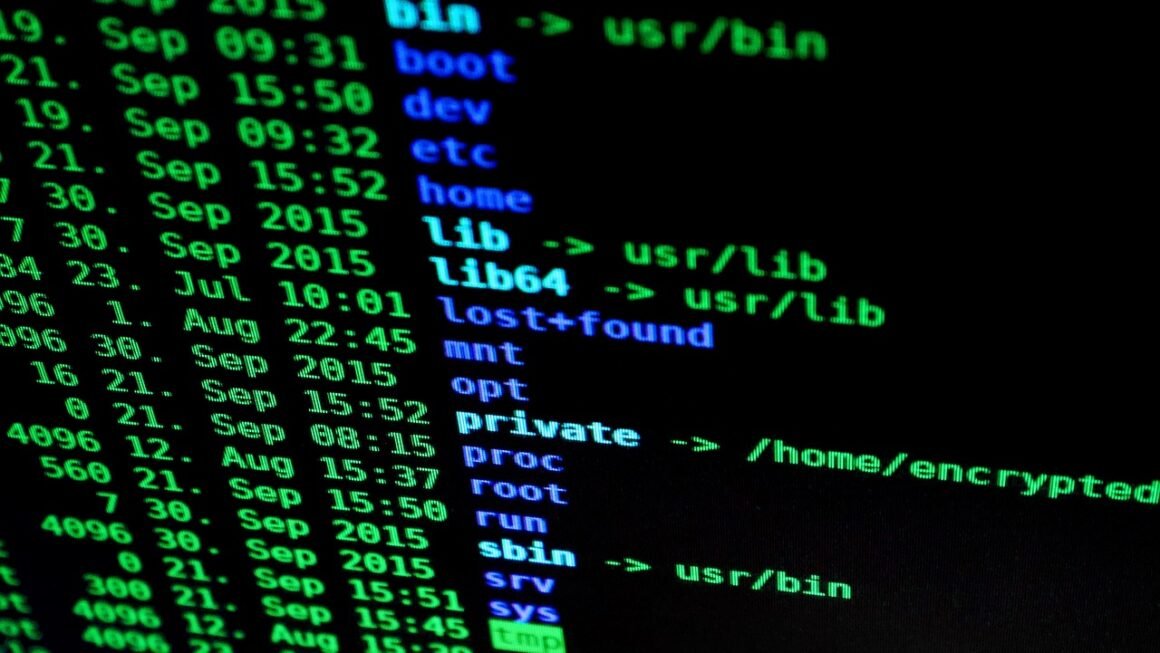The digital world offers incredible opportunities for growth and innovation, but it also presents significant risks. A cyber attack can cripple businesses, compromise personal information, and disrupt essential services. Understanding the evolving landscape of cyber threats, implementing robust security measures, and staying informed about best practices are crucial steps to protect yourself and your organization from becoming a victim.
Understanding Cyber Attacks: A Comprehensive Overview
What is a Cyber Attack?
A cyber attack is any malicious attempt to access, damage, disrupt, or steal data or systems within a computer network or device. These attacks can range from simple phishing scams to sophisticated ransomware campaigns targeting critical infrastructure. Cyber attacks are constantly evolving, becoming more complex and harder to detect.
Types of Cyber Attacks
Cyber attacks take many forms, each with its own method and intent:
- Malware: Malicious software designed to infiltrate and damage computer systems. This includes viruses, worms, Trojans, and spyware.
Example: A Trojan horse disguised as a legitimate software update that, when installed, grants attackers remote access to your computer.
- Phishing: Deceptive emails, messages, or websites designed to trick individuals into revealing sensitive information, such as passwords or credit card details.
Example: An email appearing to be from your bank requesting you to update your account information through a fraudulent link.
- Ransomware: Malware that encrypts a victim’s files and demands a ransom payment in exchange for the decryption key.
Example: The WannaCry ransomware attack in 2017, which affected hundreds of thousands of computers worldwide, demanding ransom payments in Bitcoin.
- Denial-of-Service (DoS) & Distributed Denial-of-Service (DDoS): Overwhelming a network or server with traffic, making it unavailable to legitimate users.
Example: A DDoS attack that floods a website with requests, causing it to crash and preventing users from accessing it.
- Man-in-the-Middle (MitM) Attack: An attacker intercepts communication between two parties, eavesdropping on or altering the data being exchanged.
Example: Connecting to an unsecured public Wi-Fi network, allowing attackers to intercept your login credentials and other sensitive information.
- SQL Injection: Exploiting vulnerabilities in a website or application’s database to gain unauthorized access to sensitive data.
Example: An attacker injecting malicious SQL code into a website’s search bar to bypass security measures and access user data.
The Impact of Cyber Attacks
The consequences of a cyber attack can be devastating:
- Financial Loss: Stolen funds, extortion payments, recovery costs, and reputational damage can significantly impact an organization’s bottom line.
- Data Breach: Loss of sensitive customer data, trade secrets, or intellectual property can lead to legal liabilities and loss of competitive advantage.
- Reputational Damage: A cyber attack can erode trust with customers, partners, and stakeholders, damaging an organization’s brand and credibility.
- Operational Disruption: Critical systems and services can be shut down, causing significant delays and impacting productivity.
- Legal and Regulatory Penalties: Companies may face fines and legal action for failing to protect customer data and comply with data privacy regulations like GDPR or HIPAA.
Identifying Vulnerabilities: Assessing Your Weak Points
Identifying Potential Risks
A critical step in preventing cyber attacks is identifying potential vulnerabilities in your systems and networks. This involves conducting regular risk assessments to identify weak points and prioritize security measures.
Common Vulnerabilities
- Outdated Software: Unpatched software contains known vulnerabilities that attackers can exploit. Regularly update your operating systems, applications, and security software.
- Weak Passwords: Easy-to-guess or reused passwords are a common entry point for attackers. Enforce strong password policies and consider multi-factor authentication (MFA).
- Lack of Employee Training: Employees are often the weakest link in security. Provide regular training on phishing, social engineering, and other cyber threats.
- Unsecured Networks: Wi-Fi networks without proper security configurations can be easily compromised. Secure your Wi-Fi networks with strong passwords and encryption.
- Inadequate Security Measures: Failing to implement firewalls, intrusion detection systems, and other security measures can leave your systems vulnerable to attack.
Security Audits and Penetration Testing
Regular security audits and penetration testing can help identify vulnerabilities that may not be apparent.
- Security Audits: A comprehensive review of an organization’s security policies, procedures, and infrastructure to identify weaknesses.
- Penetration Testing: Simulated attacks designed to test the effectiveness of security measures and identify exploitable vulnerabilities.
Implementing Security Measures: Building a Strong Defense
Firewall Protection
A firewall acts as a barrier between your network and the outside world, blocking unauthorized access.
- Configure your firewall to block suspicious traffic and only allow necessary ports and services.
- Regularly update your firewall’s rules and security settings.
Antivirus and Anti-Malware Software
Antivirus and anti-malware software can detect and remove malicious software from your computer systems.
- Install reputable antivirus and anti-malware software on all devices.
- Keep your software up to date with the latest virus definitions.
- Schedule regular scans to detect and remove malware.
Intrusion Detection and Prevention Systems (IDS/IPS)
IDS/IPS monitor network traffic for suspicious activity and can automatically block or mitigate threats.
- Implement IDS/IPS to detect and prevent malicious activity on your network.
- Configure your IDS/IPS to alert you to potential security incidents.
- Regularly review IDS/IPS logs to identify and respond to threats.
Multi-Factor Authentication (MFA)
MFA adds an extra layer of security by requiring users to provide multiple forms of identification before granting access.
- Enable MFA on all critical accounts, including email, banking, and social media.
- Use a variety of authentication methods, such as passwords, biometric scans, and one-time codes.
Data Encryption
Encrypting sensitive data protects it from unauthorized access, even if it is stolen or intercepted.
- Encrypt data at rest (stored on hard drives or other storage devices) and in transit (transmitted over networks).
- Use strong encryption algorithms and secure key management practices.
Regular Backups
Regularly backing up your data ensures that you can recover quickly from a cyber attack or other disaster.
- Back up your data to a secure location, such as a cloud service or external hard drive.
- Test your backups regularly to ensure that they are working properly.
- Implement a data recovery plan to guide you through the process of restoring your data.
Staying Ahead of the Curve: Continuous Monitoring and Improvement
Regular Security Updates
Keep your software and systems up to date with the latest security patches.
- Enable automatic updates whenever possible.
- Monitor security advisories and promptly apply patches to address known vulnerabilities.
Employee Training
Provide ongoing security awareness training to employees to educate them about the latest cyber threats and best practices.
- Conduct regular training sessions on phishing, social engineering, and other cyber threats.
- Test employees with simulated phishing attacks to identify those who need additional training.
- Reinforce security best practices through regular communication and reminders.
Monitoring and Logging
Monitor your systems and networks for suspicious activity and keep detailed logs of security events.
- Implement security information and event management (SIEM) systems to collect and analyze log data.
- Monitor network traffic for unusual patterns or anomalies.
- Regularly review security logs to identify and respond to potential threats.
Incident Response Plan
Develop an incident response plan to guide you through the process of responding to a cyber attack.
- Identify key personnel and assign roles and responsibilities.
- Establish procedures for containing, eradicating, and recovering from a cyber attack.
- Test your incident response plan regularly to ensure that it is effective.
Conclusion
Cyber attacks are a growing threat to individuals and organizations of all sizes. By understanding the different types of attacks, identifying vulnerabilities, implementing security measures, and staying ahead of the curve, you can significantly reduce your risk of becoming a victim. Proactive security measures, continuous monitoring, and employee training are essential components of a robust cybersecurity strategy. Remember that cybersecurity is an ongoing process, not a one-time fix. Continuously evaluate your security posture and adapt to the evolving threat landscape to protect your valuable data and systems.



